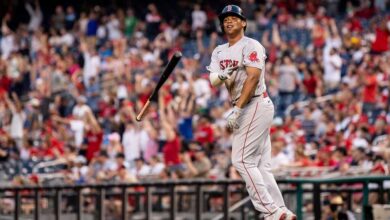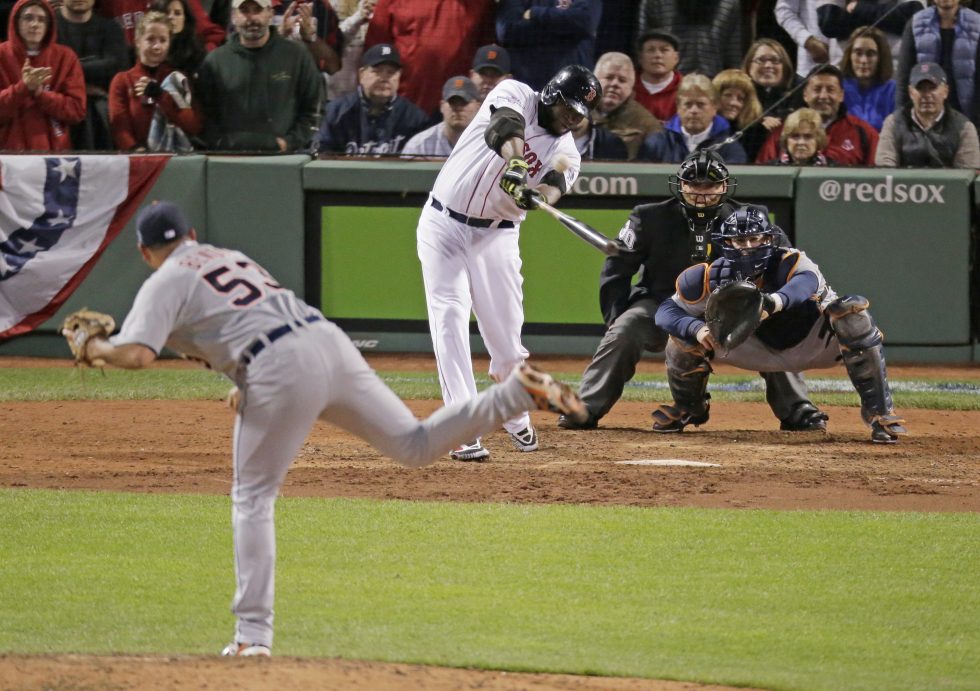

It’s been nearly three months now since Theo Epstein agreed to the terms of a five-year deal that made him the new president of baseball operations for the Chicago Cubs. In order to officially complete the deal, Epstein’s former team, the Boston Red Sox, was to receive compensation from his new team, the Cubs, in return for allowing Epstein to forgo the final year of his former contract.
Despite a deadline issued directly from MLB commissioner Bud Selig – originally set for Nov. 1 before being extended indefinitely – the two sides still have yet to agree on just what that compensation will be. The circumstances make for a very interesting situation between the two organizations.
Remember, the two sides are having trouble coming to terms on the trade that is basically completed already. After all, Epstein has spent the last few months in Chicago working for the Cubs and Ben Cherington has since assumed his vacated position in Boston.
Interestingly enough, the Red Sox must sit down with Epstein and argue just how valuable they believe he was as a GM in order to get as much compensation as possible – this coming after they essentially allowed him to walk out the door and take his talents to Chicago.
Epstein, on the other hand, is actually in a role that requires him to denounce his own worth in an attempt to surrender as little as possible from his new pool of resources in Chicago – this coming after his new bosses made him the highest paid front office personnel in Major League Baseball.
Given such an unusual framework for negotiations, it’s almost impossible to declare one or the other as having any actual leverage in the matter. It’s not surprising, actually, because the unfortunate truth is there really is no precedent for this type of situation.
Ultimately, the question is: What is losing a general manager really worth?
The answer, which provides little help in this case, is it’s completely circumstantial.
Typically, in these deals, the compensation consists of a low-grade, minor-league prospect or two, maybe with a couple thousand dollars included. That being said, the Red Sox initially opened negotiations by requesting ace pitcher Matt Garza.
Granted, that proposal was quickly scoffed at. Though it does give you an idea about the uniqueness of this situation the Cubs and Red Sox are in – that Boston would even think to ask for a premier player in return for someone who will never even step on the field.
I, myself, am not entirely sure that Boston asking for Garza was really that off-base. As a Red Sox fan, I understand I can be a little bias in this regard. Yet, the way Epstein has shined in his first few months with Chicago makes me think that just maybe Garza is a realistic return.
I witnessed Epstein’s entire tenure with the Red Sox. I saw what went on prior to his arrival and I see what’s happening so far without him. A lot of times, simply due to the nature of Boston’s media, Epstein’s mistakes largely overshadowed his positive contributions to the organization.
For instance, people will always remember Epstein for making the unfortunate signings of guys like Julio Lugo, J.D. Drew, Daisuke Matsuzaka and, inevitably, John Lackey. Unfortunately, not a whole lot of those same people will note that he was also responsible for acquiring guys like David Ortiz, Curt Schilling and Adrian Gonzalez – as well as building much of the current roster through drafting and internal development.
Trust me when I say there’s no way the Red Sox would be regarded as the premier franchise they are now without the work of Epstein. He altered the entire dynamic of management. He changed the culture of the Red Sox. His positive impact will remain in Boston for years, even after his departure.
It’s difficult to put a tangible worth on that, as the Cubs and Red Sox are currently attempting to do.
Besides, who’s to say that Theo will bring the same level of success he had with Boston to his new home at Wrigley Field?
When I first heard Epstein was leaving for Chicago, even I had my doubts he could find a way to turn the franchise into a contender as quickly as most hoped. After all, he was being handed a roster comprised of names like Carlos Zambrano, Marlon Byrd and, worst of all, Alfonso Soriano – all of who earn more money in a month than they really ought to make in an entire year.
However, in the last couple of months, Epstein has headed a quietly productive offseason in Chicago. One of Epstein’s key acquisitions was hiring a familiar face in his former assistant GM with the Red Sox, Jed Hoyer, who was the GM with the San Diego Padres before taking on the same role with the Cubs. Genius. Epstein brings not only a guy he trusts to run the team, but a guy who brings immediate value in orchestrating a key trade (see below) to land a top prospect from his former team.
The Epstein-Hoyer combo then got down to work and made a couple of value-oriented acquisitions.
By trading for Ian Stewart – a great buy-low, in my opinion – the Cubs now have a viable replacement for third baseman Aramis Ramirez, who left for free agency.
Next, the Cubs signed versatile outfielder David DeJesus to a two-year contract worth $8.5 million, in addition to a club option in 2014 for just $1.5 million. Again, great value in DeJesus – especially in 2014 if he ends up realizing his full potential.
Following those moves – which were largely overlooked amidst the flurry of free-agent activity from other teams like the Angels and Marlins – Epstein and Hoyer proceeded to make couple of more substantial moves.
Pitcher Sean Marshall spent his first six seasons in the MLB with the Cubs, establishing himself as one of the most dependable left-handed relievers in the league. Naturally, it came as a surprise to many Chicago fans when he was traded to the intradivision rival Cincinnati Reds a few weeks ago.
In return, the Cubs began retooling by acquiring three prospects from the Reds – the most notable being Travis Wood.
Wood, a former second-round draft pick out of high school, is a very solid 24-year-old starting pitcher with decent upside. Not only that, but Wood is five years younger than Marshall and is also contractually controlled for the next five seasons, whereas Marshall was due to hit free agency next winter.
Even if Wood tops out as a decent middle-of-the-rotation starter during his stay in Chicago, he’ll provide much more value to the team both in the books and on the field during those five years than Marshall would have with just one season of top-notch relief work.
This is the type of long-term decision that should give Cubs fans hope for the future – but it hasn’t been the only one made by Chicago.
In a move that will likely manifest positively in the clubhouse more so than on the field – at least initially – Zambrano was recently shipped to the Miami Marlins in exchange for starting pitcher Chris Volstad.
Zambrano had been cancerous to Chicago’s clubhouse for the past couple of years and was set to hit free agency following this season, as it were. Volstad offers decent middle-of-the-rotation production at a fraction of the cost of Zambrano’s contract – 1/40 of it to be exact – and is locked-up through 2014.
Then there is easily the best move made by the Cubs to date: acquiring Anthony Rizzo from the Padres — Hoyer’s previous team. Crafty.
Maybe I should have said, reacquiring Anthony Rizzo. You may remember Rizzo’s name from the deal Epstein orchestrated that brought Gonzalez to the Red Sox last winter.
Rizzo is the 18th overall prospect in Major League Baseball – number one of all first baseman – according to MLB.com. The 22-year-old, left-handed hitter projects as a future Adrian Gonzalez-type player himself.
During his 2011 minor-league season, Rizzo hit .331 with 26 home runs and 101 RBI and had an OPS of 1.056 – that’s over the course of just 93 games, mind you. Adjust that to reflect a full MLB season and you are looking at 45 home runs with 176 RBI. Yes, that was triple-A and not the big leagues, but he was also just 21 years old.
Rizzo struggled in 49 major-league games last season after being called up by the Padres, but Hoyer recently stated he brought him up too early last season when he was the Padres GM. Epstein knows exactly what the Cubs are getting in Rizzo after having originally drafting him in Boston. This is the type of player Chicago can, and will, build a lineup around for the next decade.
It remains to be seen whether or not the Chicago Cubs are able to rid themselves of Soriano (yeah, right) or Garza yet this offseason. If Epstein and Hoyer can find the right value and successfully ship either of the two, they will have largely contributed to one of the most impressive offseasons of any baseball franchise during a rebuilding stage.
Even if they can’t, you might be able to make that argument.
I mean, all they’ve done is shave a few million dollars off the payroll, somehow find a team willing to take Zambrano off their hands while offering a decent return, and acquire one of baseball’s best power-hitting first base prospects.
Given the nature of Chicago’s offseason plan and execution, it’s evident that Epstein has brought the same type of mentality that he used to gain acclaim with his former employer. That mentality is focused on becoming a self-sustaining organization that provides itself a core of talent through drafting and development to build around. By doing that, rather than relying on free agency, the team saves money and assumes fewer risky large-dollar contracts – such as, say, Soriano’s and Kosuke Fukudome’s.
Five years after taking over the Boston Red Sox, Epstein had helped bring the team two World Series titles, ending an 86-year drought and propelling the franchise back into the state of relevancy it currently finds itself in.
Five years from now, we could be talking about how Epstein helped end an even more historic drought for the Cubs. In that case, Garza really wouldn’t be considered enough when it comes to the whole compensation issue between the Red Sox and Cubs – and maybe that’s why the issue remains unresolved.





